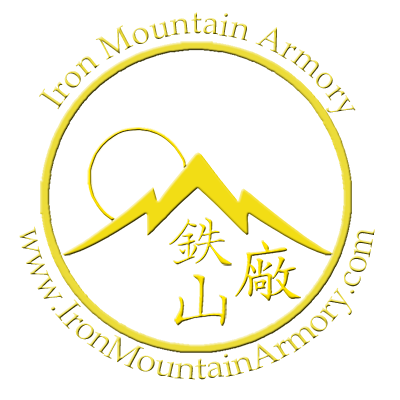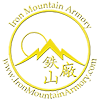Samurai Kabuto
Iron Mountain Armory carefully researched the design and crafting methods of historical kabuto (samurai helmet) from the 16th and 17th century to be certain our armorers now the details of each design. Mixed with a few modern techniques, the armorers of Iron Mountain Armory have reproduced one of the most historically accurate and economical samurai kabuto reproductions available on the market today.
It is important to note that exact terms, translated into english may often have different spelling and slightly different meanings then the original description. We are using the most common written terms and definitions at the time of researching and developing our reproduction armor.
Below are a few picture examples of our handcrafting process and finely finished samurai kabuto. Iron Mountain Armory does not sell directly. Kabuto are crafted to design within the requested class and style. So to purchase your own custom samurai armor or kabuto, please visit on of our dealers via our ONLINE STORES link.
Samurai kabuto Handcrafting Process
Zunari Bachi Kabuto
Zunari Bachi is generally defined as "A head shaped helmet bowl, assembled from 3 main plates and 2 supporting plates, with a distinctive longitudinal top plate that extends front to back over the center of the head." In previous centuries it was a popular shape, and it is definitely one of our most popular helmets too here at Iron Mountain Armory. This style of kabuto can be fitted with many different styles of shikoro (neck guard).
The pictures below are of just a few examples of the zunari kabuto Iron Mountain Armory has crafted over the many years:
Momonari Kabuto
Momonari Kabuto are a pointed samurai helmet that has a medial flange along the center of the bachi (bowl), inspired by a European cabasset. The name momonari reference the "peach shape" design which helped the kabuto deflect musket balls fired from the newly introduced teppo rifles introduced into samurai warfare around 1570. This style of kabuto can be fitted with many different styles of shikoro (neck guard).
The pictures below are of just a few examples of the momonari kabuto Iron Mountain Armory has crafted over the many years:
Hachi-Goshozan Kabuto
Hachi-Goshozan kabuto are classified as a high-sided helmet having the back higher than the front. It has been said the shape resembles the hill the samurai charge down from (particularly cavalry) to engage their enemy. Hachi-goshozan kabuto are often crafted with 8 to 18 ken (plates) but could have as many as 62 ken. The plates would be joined with byo (rivets) which could be raised or flattened down to a smooth look.
The pictures below are just a few examples of Hachi-Goshozan kabuto Iron Mountain Armory has crafted over the many years:
Hari-Bachi Kabuto
Hari-bachi kabuto is a laminated (multi plate) helmet in which the plates overlap (doubling the thickness) and joined by countersunk rivets, with flattened or low profile suji (flanged edges or ribs). The rivets are typically filed flush / flat or could be left raised. This style of kabuto was popular pre-1650 and continued into the late Edo era (1800s).
Iron Mountain Armory crafts hari-bachi kabuto in 3 classes, Gashira, Taisho and Daimyo. Gashira are crafted from a single steel plate, shaped as a bachi (bowl) and feature simulated suji, for a historical look with an economical price. Taisho are crafted from ken (individual plates), riveted or spot-welded together (for greater strength) with true suji, for a more historically accurate crafting. Daimyo is crafted from ken, then riveted together with some spot-welding, using more modern materials for great embellishment. This style of kabuto can be fitted with many different styles of shikoro (neck guard).
The pictures below are of just a few examples of the hari-bachi kabuto Iron Mountain Armory has crafted over the many years:
Suji-Bachi Kabuto
Suji-Bachi kabuto is a laminated (multi plate) helmet in which the plates overlap (doubling the thickness) and joined by rivets which are together, leaving the suji (flanged edges or ribs) of the plates prominent. This style of kabuto was popular pre-1650. Iron Mountain Armory crafts suji-bachi kabuto in 3 classes, Gashira, Taisho and Daimyo. Gashira are crafted from a single steel plate, shaped as a bachi (bowl) and feature simulated suji, for a historical look with an economical price. Taisho are crafted from ken (individual plates), riveted or spot-welded together (for greater strength) with true suji, for a more historically accurate crafting. Daimyo is crafted from ken, then riveted together with some spot-welding, using more modern materials for great embellishment. This style of kabuto can be fitted with many different styles of shikoro (neck guard).
The pictures below are of just a few examples of the suji-bachi kabuto Iron Mountain Armory has crafted over the many years:

